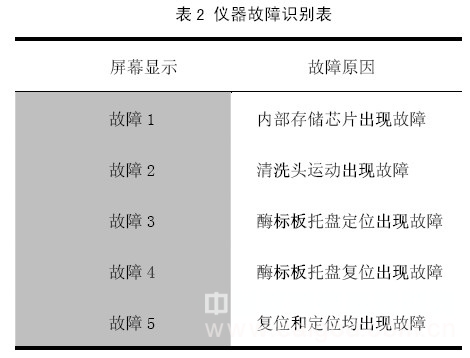Operating procedures
Infectious specimens and corrosive liquids are often encountered in laboratories, and anti-corrosion test garments should be worn during the experimental operation.
gloves. When handling hazardous samples, refer to the normal laboratory operating manual procedures.
Before operation
(1) The instrument must be installed in strict accordance with the instrument installation instructions provided in this manual to ensure proper connection of the pipeline to avoid leakage.
(2) When the washing machine is used again after long-term use, it is necessary to pre-wash the entire system four times.
2. In operation
(1) Before pressing the run key, you need to confirm:
1 The correct cleaning head has been installed;
2 The ELISA plate has been placed correctly;
3 The appropriate program and parameter values ​​have been selected;
(2) In order to prevent liquid from entering the pump, dump the waste liquid in time.
(3) If the surface of the instrument is contaminated with biohazardous substances, clean it with a neutral disinfectant.
(4) Keep the slides clean and dry to avoid clogging; if liquid spills, dry them in time.
(5) In the process of washing the plate, if the instrument needs to stop running, please press the reset button on the keyboard, do not force the instrument by hand or object.
Stop running.
3. Instrument disinfection
No disinfection is required under normal working conditions of the instrument. Transferring and transporting instruments (such as transferring instruments from one laboratory to another
The instrument must be fully disinfected before a laboratory.
3.1 disinfection reagent
(1) 10% formaldehyde solution;
(2) 70% alcohol;
(3) Glutaraldehyde solution 4%.
3.2 Disinfection steps
(1) Disinfection preparation:
Prepare 20 mL of 10% formaldehyde solution, 200 mL of 4% glutaraldehyde solution, one bottle of 70% alcohol, and several medical cotton balls.
(2) Cleaning the instrument:
1 Inject distilled water into the instrument;
2 Lift the cleaning head and fill the tray pre-washing tank with glutaraldehyde solution;
3 Drain the tray pre-washing tank with the cleaning head, fill the tray pre-washing tank with distilled water, and drain it;
4 Remove the plate and the cleaning head and soak them in glutaraldehyde solution for 24 hours;
5 emptied the liquid bottle;
6 Turn off the power and unplug the power cord.
(3) Instrument disinfection:
1 Disinfect the instrument casing with a cotton ball soaked in 70% alcohol;
2 Disconnect the main unit and the liquid bottle, open the liquid bottle cap, and place the instrument in a large plastic bag;
3 Put the cotton ball soaked in the 10% formaldehyde solution into a plastic bag and confirm that the cotton ball does not touch the instrument;
4 Seal the plastic bag for at least 24 hours.
Note: Formaldehyde is used to fumigation of the instrument. Do not allow the formaldehyde solution to directly contact the instrument. Because even a trace amount of formaldehyde
It also has an adverse effect on the enzymes used in the microwell ELISA test, resulting in incorrect experimental results.
(4) Post-disinfection treatment:
1 Remove the instrument from the bag;
2 Clean the instrument with a neutral cleaning solution;
3 wipe off the contaminant with 70% alcohol;
4 Remove the cleaning head and the enzyme plate holder from the glutaraldehyde solution and rinse them with distilled water and reinstall them on the instrument;
5 Fill the reagent bottle with distilled water and perform a pre-wash procedure to flush the liquid flow path of the system.
(5) A dated disinfected label is attached to the instrument.
Note: Disinfection must be carried out in a ventilated environment and wear protective outerwear and gloves.
2. Failure analysis
(1) If the LCD does not display or the keyboard presses no response after power on, it indicates that the display or keyboard is in poor contact.
(2) When the instrument is powered on or running, the system can automatically identify the faults that occur, as shown in the following table:

Safety Components for Elevator
Precision Safety Components,Elevator Safety System,elevator safety components,elevator car safety device
Ningbo Xinda Elevator Traction Technology Co., Ltd. , https://www.xinda-elevator.com